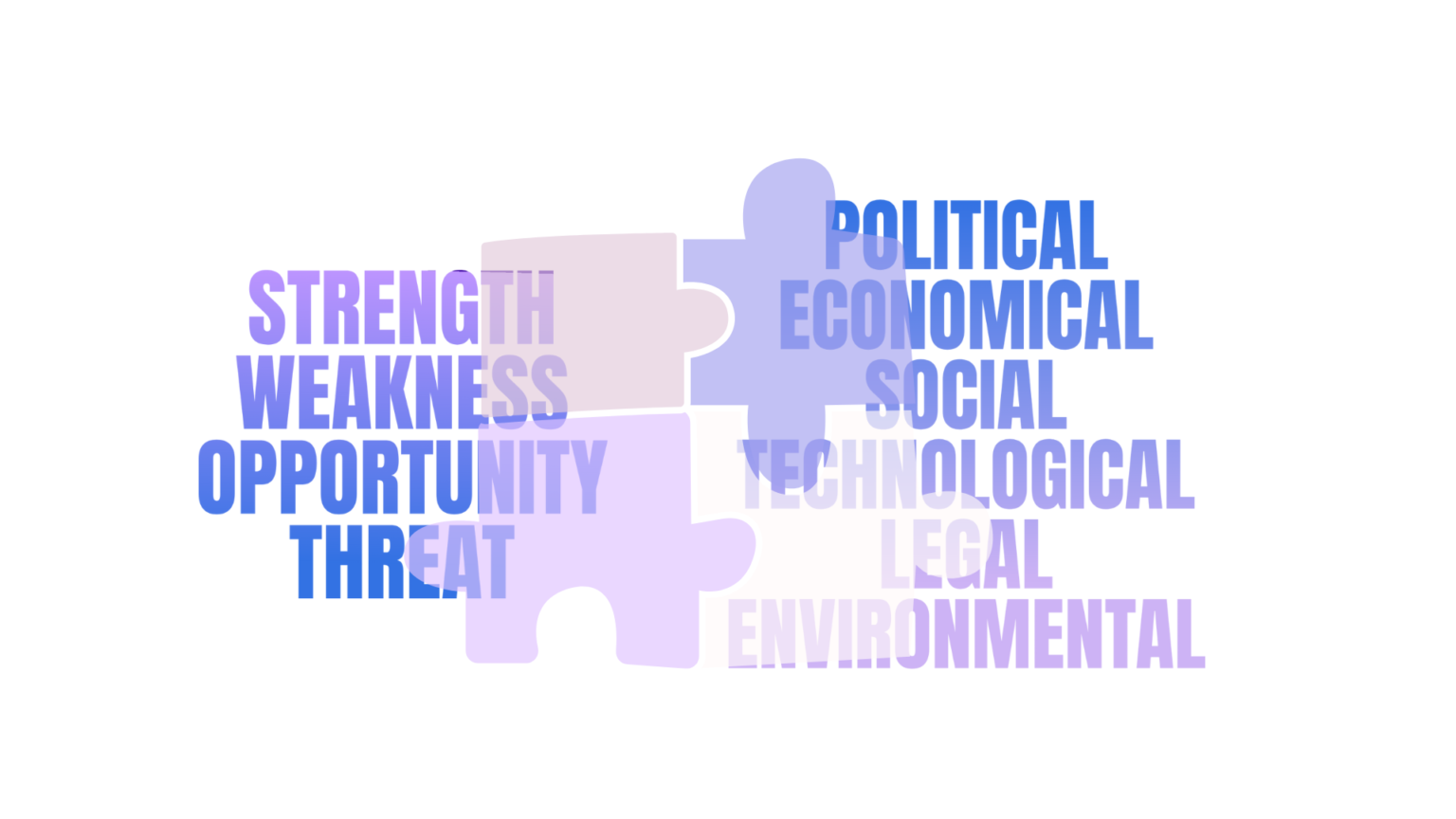Before diving into email marketing, conducting thorough analyses is essential to ensure your strategies are well-planned, impactful, and aligned with your audience’s needs. This is where SWOT and PESTLE audits come into play, offering valuable frameworks to guide the development of successful email campaigns.
What Are SWOT and PESTLE Audits?
- SWOT Audit: This analysis focuses on identifying a company’s internal Strengths, Weaknesses, Opportunities, and Threats, giving you a clear picture of what works in your favour and where you may face challenges.
- PESTLE Audit: This analysis examines external influences that might affect your business, including Political, Economic, Social, Technological, Legal, and Environmental factors.
These audits should be conducted at the onset of your campaign planning and revisited periodically to adapt to changes and new information. Involving team members can provide diverse perspectives, ensuring a more thorough and accurate analysis. Document your findings clearly, whether on paper, a digital platform like Google Docs, or a whiteboard, to keep your process organised and actionable.
Conducting a SWOT Audit: An In-Depth Approach
A SWOT audit involves breaking down your company’s internal landscape to understand what drives success and where improvements are needed. Here’s how to approach each component:
Strengths:
- What unique resources or capabilities give your company a competitive edge?
- What are the standout qualities of your marketing team? (e.g., exceptional creativity, strategic thinking, effective communication)
- In which areas does your company consistently perform well, and how can these be leveraged in your campaigns?
Weaknesses:
- Where are the gaps in your company’s skills, resources, or processes?
- Are there areas of your brand that have been underdeveloped or neglected?
- What could be improved through better time, training, or resource allocation?
- Are there internal challenges that hinder your marketing efforts?
Opportunities:
- What emerging trends, technologies, or market demands could you capitalise on?
- Are there untapped resources, partnerships, or market segments that could benefit your campaign?
- How can you innovate or improve your processes to achieve better results?
Threats:
- What external challenges or competitive forces could impact your success?
- Are there industry shifts or regulatory changes that could pose risks?
- Do you have the resources and capabilities to address these threats effectively?
After completing the SWOT analysis, it’s crucial to take a step back and assess the bigger picture. Look for patterns, unexpected insights, and areas where strengths can be leveraged to counteract weaknesses or where opportunities can be seized to mitigate threats. This holistic view will help you craft a more strategic and effective campaign.
Conducting a PESTLE Audit: Analysing External Factors
While SWOT focuses on internal factors, a PESTLE audit helps you navigate the broader external environment that can influence your campaign’s success. Here’s how to approach each component:
Political:
- Are there any recent political changes that could affect your business operations or marketing efforts?
- How might government policies or political instability in certain regions impact your strategy?
- Are there upcoming elections or policy shifts that could create opportunities or challenges?
Economic:
- What is the current economic climate in the regions you operate in, and how might it affect consumer behaviour?
- How do economic factors such as inflation, employment rates, or currency fluctuations influence purchasing power?
- Are there economic trends that could create new opportunities or pose risks to your business?
Social:
- What cultural trends or social behaviours are influencing your target audience?
- How do demographics such as age, education, or lifestyle impact consumer preferences in your key markets?
- Are there social movements or shifts in public opinion that could affect your brand perception?
Technological:
- How are technological advancements shaping consumer expectations and behaviour?
- Are there new tools, platforms, or innovations that could enhance your marketing efforts?
- How has recent technological evolution changed the competitive landscape, and how can you stay ahead?
Legal:
- What are the key legal requirements and regulations in the regions you operate in, and how do they affect your marketing practices?
- Are there pending legal changes that could impact your strategy?
- How do data protection laws and advertising regulations influence your email marketing efforts?
Environmental:
- How does your company’s approach to sustainability resonate with your target audience?
- What environmental factors, such as climate change or natural disasters, could impact your business operations?
- Are there opportunities to align your brand with environmental initiatives that matter to your customers?
By thoroughly examining each of these factors, you gain a clearer understanding of the external forces at play and how they might influence your campaign. Reflecting on the results of your PESTLE audit, alongside your SWOT analysis, equips you with the insights needed to develop well-rounded, strategic, and responsive campaigns.
Integrating SWOT and PESTLE Insights into Your Strategy
The combined insights from SWOT and PESTLE audits provide a robust foundation for your campaign strategy. They enable you to anticipate challenges, leverage strengths, and adapt to both internal and external influences. The more comprehensive your analysis, the more prepared you’ll be to create campaigns that resonate with your audience and achieve your business objectives.
Remember, these audits are not just a one-time task but should be revisited regularly to ensure your strategies remain relevant and effective in a constantly evolving environment.

